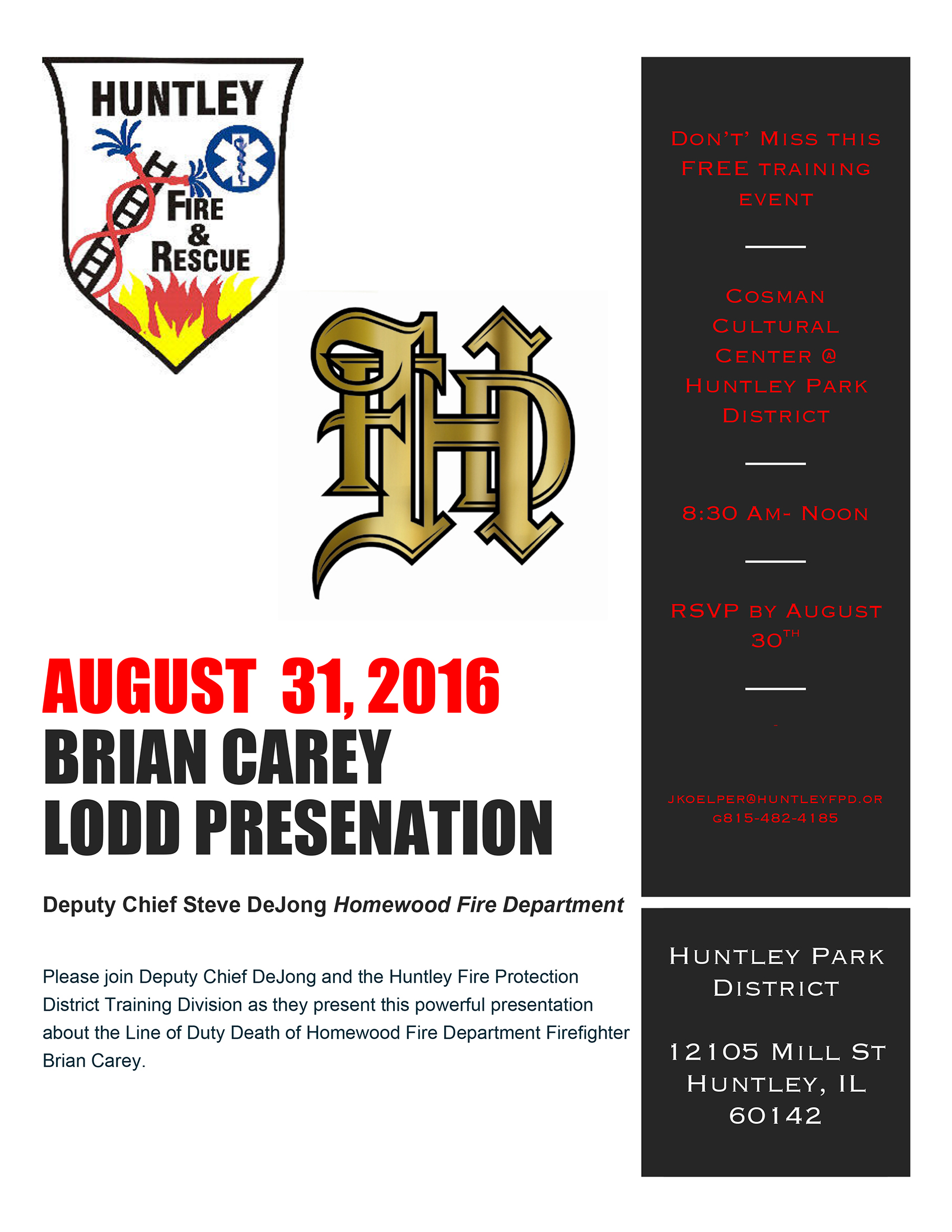Excerpts from the ChicagoTribune.com:
Every year at the end of March, firefighters and the family of fallen Firefighter Brian Carey meet at Holy Sepulchre Cemetery for a memorial service. It will be 10 years ago on March 30 when 28-year-old Carey, a rookie firefighter for the Homewood Fire Department, was killed after he rushed into a burning home in an effort to rescue a resident trapped.
A lot went wrong that night in the way the situation was handled. There was no chance to save 87-year-old Wendell Elias from the burning home by the time firefighters from multiple departments arrived, and Carey should have never been in there. A federal report blamed ineffective fire control tactics among the factors that led to the death of Carey, who was the first firefighter to be killed in the line of duty in the Homewood Fire Department’s 109-year-old history.
After the tragedy, Homewood Fire Chief Bob Grabowski promised the Carey family there would be better training in the department to ensure a tragedy like that would never happen again as a result of factors listed in the report.
Ten years later, fire officials from across the south suburbs say firefighting tactics have significantly changed since the tragedy. A training center, the first of its kind in Illinois, was opened in 2011 in Homewood and named after Carey. At the Brian Carey Training Center, firefighters from 20 different communities across the Southland train together to learn their individual roles so they can better provide coordinated efforts when working on a scene together.
Homewood firefighters train every day and twice a month with firefighters from other departments. Previously, there was no daily training or set schedule for training, which was common in the fire service at the time. Many of the firefighters were paid on-call, so they didn’t have time to train regularly and there wasn’t enough money given to fire departments.
The National Institute for Occupational Safety and Health report following Carey’s death cited firefighters’ failure to recognize, understand, and react to deteriorating conditions, uncoordinated ventilation and its effect on fire behavior, and inadequate risk-versus-gain analysis as contributing factors.
Firefighters path the fire were met by Elias’ wife who told them her husband inside was paralyzed. A proper risk-versus-gain analysis by a commander would’ve revealed there was no way to save Elias at that point and it wouldn’t have been worth putting other firefighters’ lives in danger entering the building. Crews also were performing both horizontal and vertical ventilation, but they probably should not have been performing vertical ventilation. The report notes that the house sustained an apparent ventilation-induced flashover.
Carey was caught in the flashover where temperatures can reach 1,500 to 2,000 degrees Fahrenheit. A flashover is survivable though if a firefighter is wearing all their equipment. Another firefighter who was with Carey survived with first- and second-degree burns, but she had been nearer the exit and was wearing all her equipment. Carey was found without his headpiece even though he entered with it on and later died of asphyxiation. No one will ever truly know why Carey didn’t have his mask on. Grabowski said rookies can experience claustrophobia in certain situations and remove the headpiece in panic. Carey had been on the job for less than two months.































Unpublished letter to the Chicago Tribune – response to an editorial
May 7
Posted by Admin in Commentary | 3 Comments
Excerpts from afscme31.org:
thanks Dan
Tags: Associated Fire Fighters of Illinois union president Patrick Devaney, Firefighters Respond to Tribune Editorial, Homewood firefighter Brian Carey, National Fire Protection Association, National Institute of Occupational Health and Safety